Norfolk ganseys
One of the advantages of creating a website as opposed to writing a book is that it is almost infinitely extendable. As time goes by, new discoveries are made, so a website can be updated and extended ad infinitum and errors and omissions can be corrected. With a book you are stuck with what has been printed, until and unless another edition comes out. This site has been a work in progress, reporting the research I have been doing since 2018 to the present (which itself was an extension of work I did as a curator in the 1980s and 1990s) and I have learned a great deal during its creation. A website is practically limitless in what it can hold. A book by contrast is limited to a certain number of pages, more often set by publishers and accountants than by the author. So, all books on ganseys are really only edited highlights of the variety that is out there and are far from complete. This site isn't yet complete either. It can only record what is caught in the sieve of history - surviving examples, photographs and charts. It isn't the compehensive catalogue I set out to create but watch this space, there is possibly more to come.
Martin Warren
Cromer, October 2023
Some conclusions
Jump to sections:
- A huge variety of patterns
- The bigger ports have little or no knitting tradition
- Sheringham ganseys were the finest
- The Scottish influence
- Norfolk cables turn left, Yorkshire turn right
- The oldest gansey photographs in the world
A huge variety of patterns
This collection of gansey patterns demonstrates that there was no lack of variety or inventiveness in Norfolk. This contradicts the oft-repeated assertion that "each port had its own pattern" and "you could tell where a drowned fisherman had come from by the pattern on his gansey". Each port had numerous patterns knitted through the years and apart from a few favourites the majority of patterns were only knitted once. Ideas and gansey patterns travelled up and down the East Coast and across the North Sea. Sheringham today has a population of over 7000 but in 1881 there were just 1159. Despite its diminutive size there were 100 crab boats in the 19th century and a good proportion of the population were fishermen. All of those would have had a gansey, possibly several, and many were knitted in the town. This site documents 63 different Sheringham gansey designs and there are more to be added. Sheringham was fortunate in having a resident portrait photographer - Olive Edis - who provided first class pictures of fishermen and their gansey patterns. Furthermore, being a seaside resort, the town was photographed more than most places. So, the evidence for diversity and richness of design is abundant, which may give it an advantage over other Norfolk ports but it cannot be doubted that Sheringham is head and shoulders above the others in its knitting prowess.
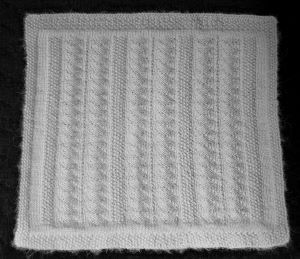 |
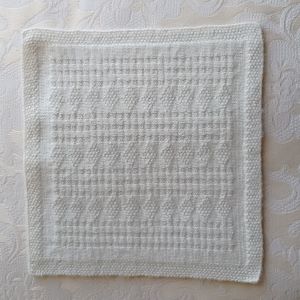 |
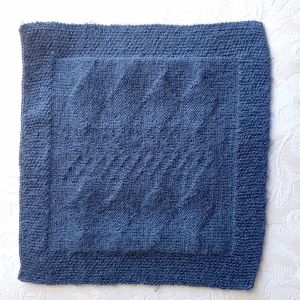 |
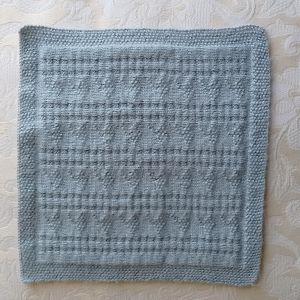 |
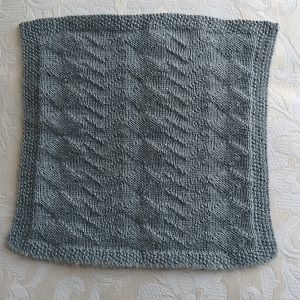 |
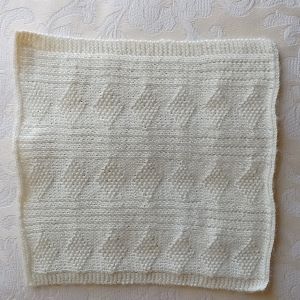 |
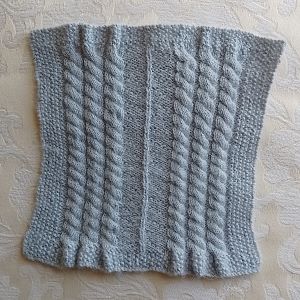 |
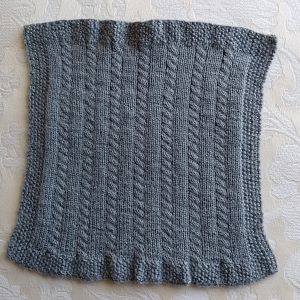 |
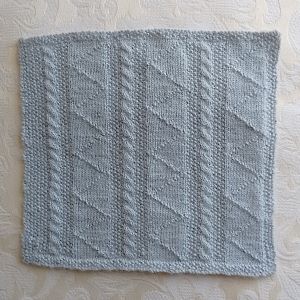 |
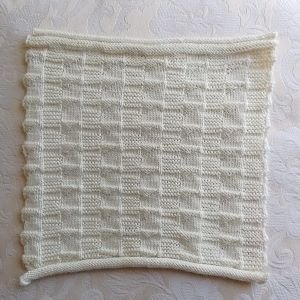 |
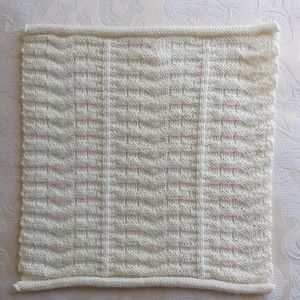 |
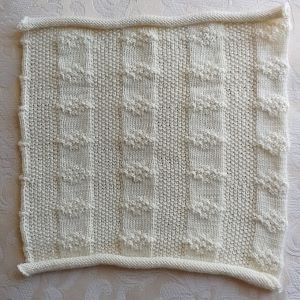 |
Click on a thumbnail to enlarge
Samplers knitted by -
Top row left to right: 1. GP54 Val Smith 2. GP66 Val Smith 3. GP83 Val Smith 4. GP27 Val Smith
Middle row left to right: 5. GP52 Trenna Warner 6. GP62 Linda Claxton 7. GP68 Heather Oliver 8. GP49 Heather Oliver
Bottom row left to right: 9. GP109 Heather Oliver 10. GP76 Yvette Hadfield 11. GP67 Yvette Hadfield 12. GP78 Yvette Hadfield
Back to the top
The bigger ports have little or no knitting tradition
Perhaps counter-intuitively the large fishing ports of Great Yarmouth (and its close neighbour in Suffolk, Lowestoft) do not have a rich knitting tradition. In fact, Jan Whitehead, who founded the Lowestoft Gansey Project, soon found that there were hardly any indigenous Lowestoft ganseys to speak of. King's Lynn too used to knit ganseys commercially but usually to a set number of designs such as seeds and bars, or cables down each breast, which have no unique affinity with Lynn. Local patterns were few and far between. Cromer is a town of comparable size to Sheringham, with a longshore fishing industry too, yet it had nothing like the knitting tradition of Sheringham. Perhaps its development as a seaside resort for the well-to-do in the earlier 19th century provided alternative incomes and families did not have to rely on home knitting to the same extent as the insular little village of Sheringham.
Back to the top
Sheringham ganseys were the finest
Norfolk ganseys in general were quite fine but Sheringham sported the finest of all. This is very noticeable when put up against Yorkshire and Northumberland ganseys, which could be decidedly chunky and knitted in 5-ply yarn. Sheringham's were fine and understated by comparison, knitted with a shield (sheath) on fine needles (size 15-17) and fine worsted yarn (3- and 4-ply, never 5-ply). Some of the Scottish ganseys were fine too. The finest I have found to date is 11.2 spi. Was this a Scottish trait brought down when the fleets followed the herring and not only the fishermen but the womenfolk too mingled in the ports of the East Coast? In the sixteenth century Norwich was renowned for knitting very fine stockings in large quantities. Could this skill echo down through the centuries into knitting fine ganseys? There is a suggestion that Sheringham women knitted socks commercially, though I can find no hard evidence for it yet. Were they used to the finer wool and smaller needles and possibly even salvaged the odds and ends of wool to knit their own ganseys? My colleague Val Smith, who re-trained herself to knit on fine needles using a knitting sheath with fine (4-ply) wool, says that she would not like to go back to knitting with thick wool and needles again. The refined appearance of the lighter weight fine ganseys was certainly preferred by the fishermen, especially as they wore them under a jacket to chapel, and to meetings. Teapot West might have been photographed modelling newly-minted designs in Michael Harvey and Rae Compton's little Shire Album "Fishermen Knitting" but he was not comfortable in these "great clumping things" and took them off as soon as the photo shoot was over! So, why did Sheringham knit so finely? I think it came down to individuals who took a huge pride in their work and they were knitting for loved ones and people that they knew. It was down to a relatively few key individuals whose skills, tastes and productivity gave rise to a recognisable Sheringham style, who could be relied upon to turn out a good fitting gansey. There may have been money changing hands to a degree but many ganseys were knitted for love and for pride. Some of the best knitters were Methodists and their ethos was to do all things well and properly.
Hazel Cheney: "My grandfather ['Harry Billy' West] was a Methodist, and my grandmother [Eliza Tabitha], and a very upright...you know how the fishermen were years ago, very right and everything had to be done exactly right and you weren’t to play on a Sunday, and you had to go to chapel three times a day."
Jonathan Emery once said that if they made a mistake they would always take it back and correct it. We have noticed very tiny mistakes occasionally but on the whole the ganseys we have examined closely have been perfect. Compare this with Jenny Griffin's gansey (GP72 from Flamborough), which was a great gansey but evidently knitted under pressure and with many errors.
If you plot out the tension (stitches per inch) against the date on a graph, you discover that there has been a tendency for Sheringham ganseys to get finer over time. In 1858 the earliest dated example (in the world) is a very coarse looking seeds and bars pattern of John Grimes knitted at around 7 stitches per inch. This is unlikely to have been knitted in Sheringham, but bought at a marine outfitters, so we should discount that one. Concentrating purely on indigenous patterns we can find datable examples back to the 1890s at around 8 or 9 spi while at the other end of the scale in 1980 Dorothy Martins was straining the needles and produced a 14 spi gansey for a WI competition. The second finest I have seen, at 12.5 spi, was knitted in around 1970. There is a range in-between, with an upper limit at 12 spi. It appears that the average tension increased not so much because the ganseys were knitted finer but because fewer coarse gansey were produced in later decades. This perhaps mirrored the decline of the offshore fishing fleet after the Second World War. Nowadays ganseys are hardly worn at sea, being seen mainly on ceremonial occasions such as attending fishermen's funerals, where they are symbolic of belonging to the fishing community. Naturally, these would be "Sunday-best-go-to-meetings" ganseys (to borrow a phrase from Hazel Cheney's interview). They had to look smart and fit well.
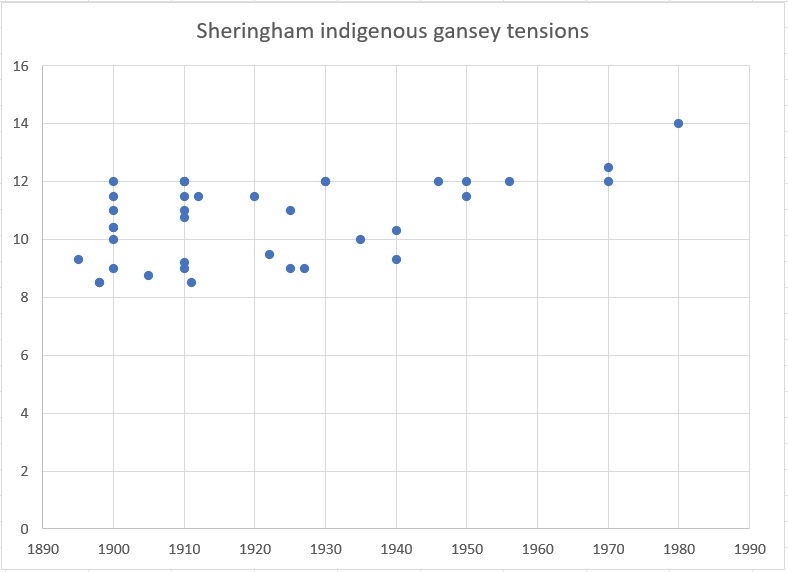
The Scottish influence
The British fishing fleet expanded in the 19th century to feed the growing population. Ports like Great Grimsby, Great Yarmouth and Lowestoft landed huge quantities of fish from steam trawlers and drifters, then sent them off to market by rail. The migration of the herring was followed southwards by the Scottish fleet, whose boats were seen in numbers in the East Coast ports and their crews mixed with the English fishermen. The womenfolk came south too, to work on the harbourside gutting and salting down the herring. The herring lasses were great knitters too, knitting not only for their own crews but selling ganseys to others. We know from Hazel Cheney's oral testimony that her grandmother Eliza Tabitha West and others used to go to Yarmouth by train to keep up friendships with some of the herring lasses and this is evidenced by there still being a number of Scottish pattern 'makkin belts' (padded leather knitting belts) in homes in the town (and in museums). Tips on the finer details of technique and ideas for knitting patterns came back to Sheringham too and became part of the local tradition.
Back to the top
Norfolk cables turn left, Yorkshire cables turn right
A general observation of mine from books, photographs and surviving historic ganseys suggests that the majority of cables knitted in Norfolk turned to the left (left-hand thread). By comparison, those in Yorkshire mainly turned to the right. I have not done a scientific survey yet but that is my feeling. I think this only holds true for the older ganseys, before revivalists and hobby knitters began knitting ganseys from patterns. One supposes that the old knitters were taught the technique of cabling "at their mother's knee" and whether the cable needle was brought forward or sent back determined the outcome of the handedness of the cable. Perhaps most just did it the way they were taught and didn't question why.
Nobody I have mentioned this to seems to have noticed the difference between Norfolk and Yorkshire gansey cables at all. The Scottish fleet is mixed left- and right-handed. I invite somebody to look further into this hypothesis - that Norfolk should "do different" (yet again, it is our motto) and go for left-hand threads, and why.
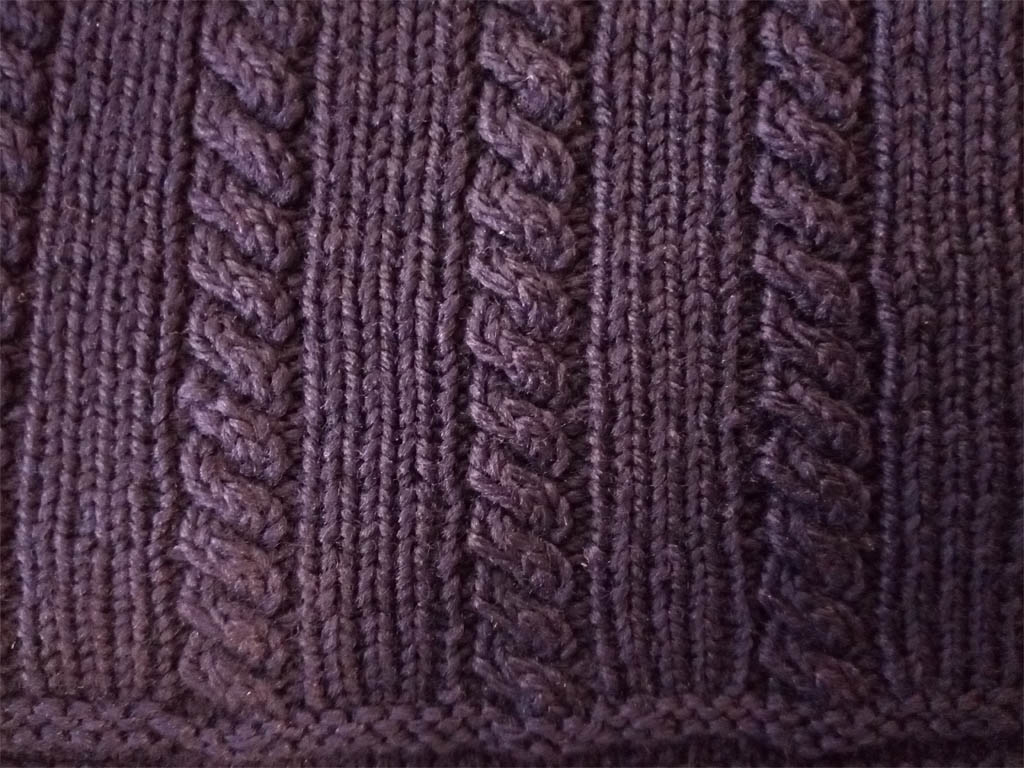
Above: a Sheringham gansey (GP49) with cables turning left
You could begin by looking at Gladys Thompson's "Patterns for Guerseys, Jersays and Arans" and noticing which way the cables turn in the photographs. It does not begin well for my hypothesis, as fig 1 is a gansey from Patrington and Withernsea in the East Riding of Yorkshire, and it turns to the left. The same gansey appears in fig 4 on a model and it too turns to the left. Figure 3 is once again the same gansey but it turns to the right! So, already the book designers can be shown to be slap-dash, because they can't all be correct. The text gives no indication as to the direction of twist the cables should have. It is very easy when a blockmaker creates a printing block from a photograph to place the negative the wrong side down and this creates a mirror image (thus reversing the apparent direction of twist). I suggest this is what happened in the case of figs 1 and 4 and that fig 3 is correct. There are other instances in the book where photos have been printed upside down or back-to-front, which supports the view of a slap-dash publisher. All other Yorkshire cables in Gladys Thompson turn to the right: Flamborough figs 5, 7, 11, 13, 15; Filey figs 18, 19, 21, 24, 25, 30, 32, 34, 38, 39; Robin Hood's Bay fig 55; Whitby fig 61, 63.
I rest my case.
Back to the top
The oldest gansey photographs in the world
In 1846 Lewis Harding retired to Polperro, Cornwall and in 1856 he took up photography. He became famous for the numerous wonderful photographs of Polperro life and the local fishermen, who of course all wore ganseys. Unfortunately the majority of his photographs are undated, while some can be dated because they depict known people, they are from the 1860s and 1870s. It is quite likely that he would turn to the local people as subjects for his hobby from the very start of his career but we do not know if the earliest images have survived and as far as I know, none have been dated to the 1850s.
Meanwhile, at Sheringham Hall, somebody in the Upcher family (we don't yet know who) was experimenting with early photographic processes and there are family albums surviving. I was privileged to see them in the drawing room of the Hall in the 1980s, when I was curator of Cromer and Walsingham Museums, and made 35 mm copies of a few of them. Tim Groves too was given access to the albums and he also made 35 mm copy negatives. Fortunately for us, the page with two photographs of John Grimes, Sheringham fisherman is annotated with the date - 1858. The two images are not great quality and I suspect they were made by the calotype process using a paper negative and then printed by the salted paper technique. The fibres in the paper and the limited range of tones, together with the age of the prints prevent us seeing fine details but there is sufficient there for me to see the pattern on the gansey is a well-known commercial one called seeds and bars and by measuring the angle that the diagonal ridges the seeds make I can state that it is the more common form - a k2, p2. See the chart for more details: John Grimes gansey chart
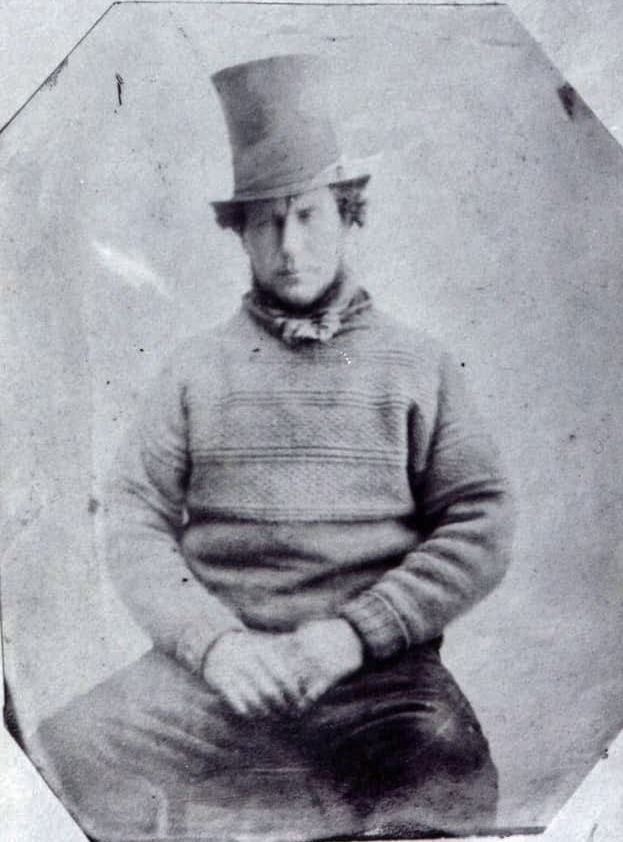
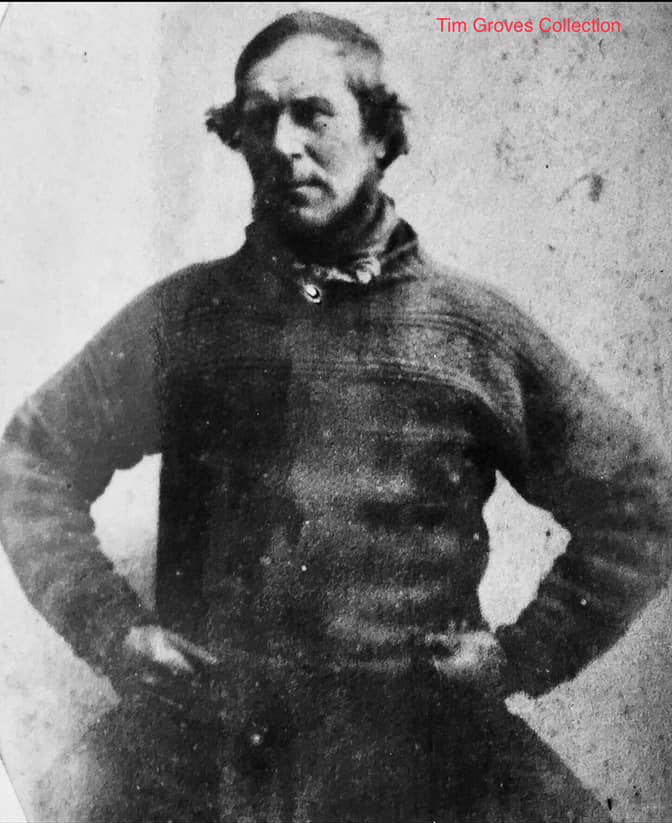
I think that until somebody can prove otherwise, these two images, which must have been taken just a few minutes apart, are the oldest securely dated photographs of a gansey in the world, and that is worth celebrating!
Back to the top